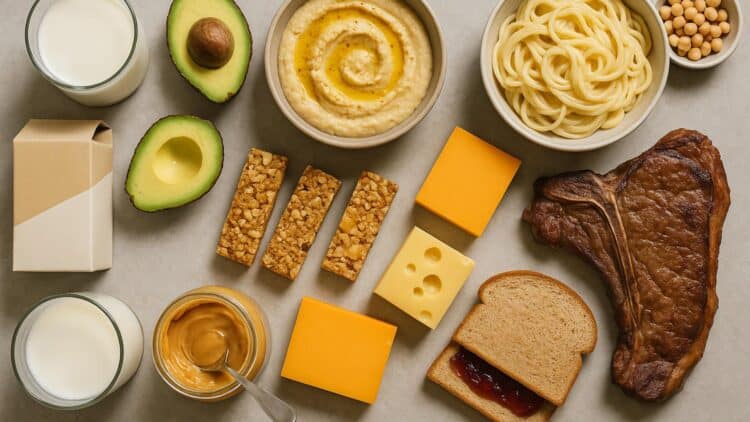Protein has become the latest macronutrient on social media. If you go to the supermarket, you’ll see entire shelves and aisles filled with ultra-processed products with added protein that promise greater physical performance and even magical weight loss. And it’s no wonder, since it’s the “superstar of satiety.”
Like all booms in the food industry, we end up so overwhelmed with information that we don’t really know how much protein each food contains. Some ingredients in our pantry and refrigerator have a reputation that they sometimes don’t deserve, or worse, are marketed as superfoods when in reality their nutritional values leave much to be desired.
Why you need protein
Protein isn’t just something that people who go to the gym need. It’s the building block our bodies use to build and repair practically everything: muscles, bones, skin, hair, and even the enzymes and antibodies that defend us from disease. Protein is also essential for dieting and weight control, as it’s one of the things that makes us feel full.
Have you ever noticed that you can eat a bowl of spaghetti Alfredo on your own—and be hungry again two hours later—but if you eat a T-bone steak at a steakhouse, you don’t eat again until the next day? That’s the difference between a meal high in carbohydrates (but low in protein) and a meal high in protein and low in carbohydrates.
The difference is that protein is digested slowly, which keeps the stomach busy for a longer period of time, so we feel full longer. At the same time, protein suppresses Ghrelin, known as the “hunger hormone,” keeping cravings at bay. That’s why you should avoid foods that are marketed as healthy but don’t actually have much protein, because you’ll still get hungry even if you eat large quantities of them.
False protein foods
These are mainly “eco-friendly” and “plant-based” alternatives. This is the case with almond milk, which is sold as a substitute for cow’s milk for people who are lactose intolerant or vegan. While a glass of traditional whole milk has 8g of protein, the same glass of almond milk only contains 2g.
Then we have the superfood that seems to dazzle everyone. We are talking about the culprit that Millennials cannot afford to pay a mortgage: avocados. Aside from wrecking the finances of post-boomer generations, this fruit has been sold as if it were manna from heaven, but it’s not: although its value lies in monounsaturated fats (healthy fats!) and fiber, half an avocado only contains 1.5g of protein.
Next to guacamole, there is also a food that is sold as ultra-high in protein when it is not. Hummus is delicious—and relatively healthy because it is made from chickpeas—but it is diluted with olive oil and tahini, making it higher in calories than protein: it only contains about 2g of protein per 1/4 cup.
Another spreadable ingredient that is somewhat overhyped is peanut butter. Gym bros have been singing their praises of this food for decades. And they’re partly right: 7g of protein for just two tablespoons isn’t bad at all. The problem is that those two tablespoons also contain 16g of fat, which means it’s not a low-fat food. If you’re on a diet and want to feel full, don’t even think about making yourself a peanut butter and jelly sandwich.
Another ultra-processed food that has been sold to us as healthy is granola bars. Only a billion-dollar industry is capable of convincing the population that a bar made out of cheap carbohydrates and bound together with syrups and sugars is remotely healthy. If you look at the nutritional values, they only have 1-3g of protein. If you really have to buy one, make sure it has at least 10-15g.
Finally, we advise you to take a good look at the type of cheese you buy. Although it is a natural food that we have been eating for millennia, not all cheeses are the same. Some, such as cheddar or Swiss, have a higher fat content than protein, so it will take you too long to feel full if you eat them.

